Mourad Khayati
ImputeGAP: A Comprehensive Library for Time Series Imputation
Mar 19, 2025

Abstract:With the prevalence of sensor failures, imputation--the process of estimating missing values--has emerged as the cornerstone of time series data preparation. While numerous imputation algorithms have been developed to address these data gaps, existing libraries provide limited support. Furthermore, they often lack the ability to simulate realistic patterns of time series missing data and fail to account for the impact of imputation on subsequent downstream analysis. This paper introduces ImputeGAP, a comprehensive library for time series imputation that supports a diverse range of imputation methods and modular missing data simulation catering to datasets with varying characteristics. The library includes extensive customization options, such as automated hyperparameter tuning, benchmarking, explainability, downstream evaluation, and compatibility with popular time series frameworks.
DAOC: Stable Clustering of Large Networks
Sep 19, 2019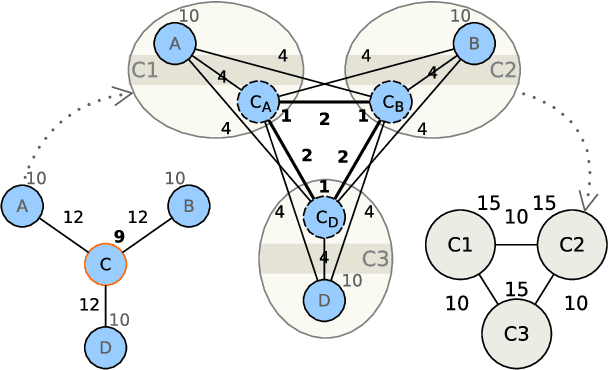
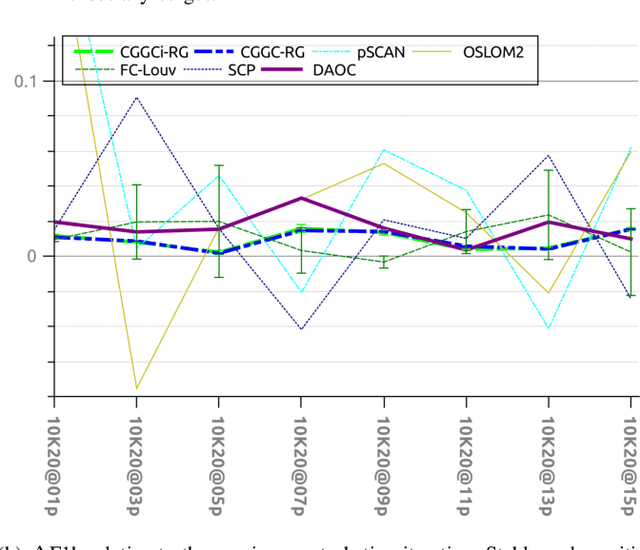
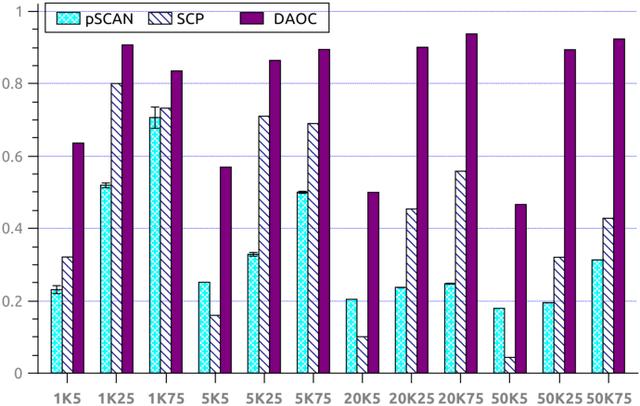
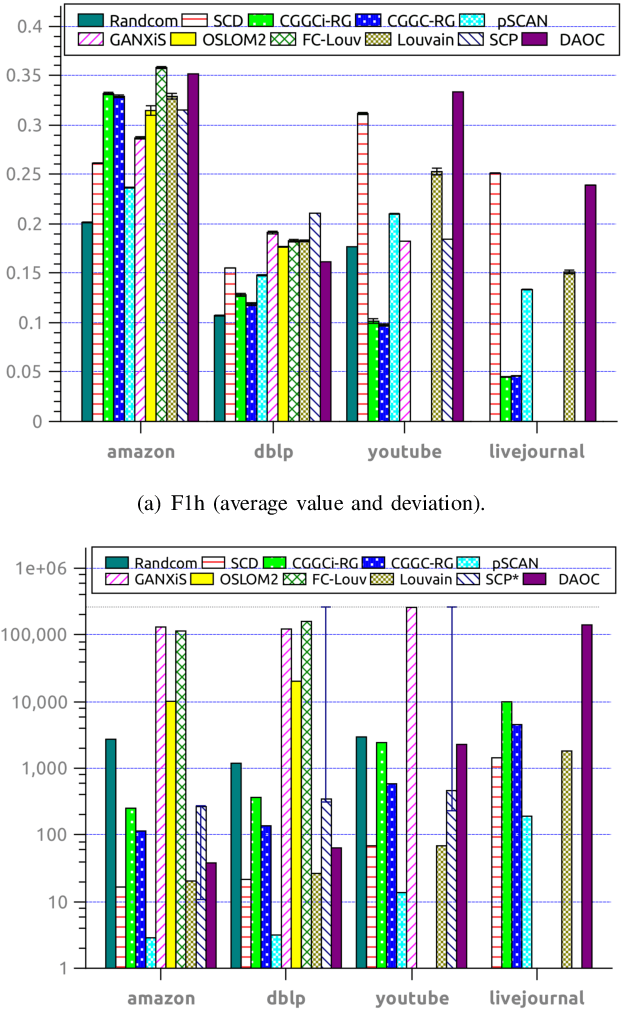
Abstract:Clustering is a crucial component of many data mining systems involving the analysis and exploration of various data. Data diversity calls for clustering algorithms to be accurate while providing stable (i.e., deterministic and robust) results on arbitrary input networks. Moreover, modern systems often operate with large datasets, which implicitly constrains the complexity of the clustering algorithm. Existing clustering techniques are only partially stable, however, as they guarantee either determinism or robustness. To address this issue, we introduce DAOC, a Deterministic and Agglomerative Overlapping Clustering algorithm. DAOC leverages a new technique called Overlap Decomposition to identify fine-grained clusters in a deterministic way capturing multiple optima. In addition, it leverages a novel consensus approach, Mutual Maximal Gain, to ensure robustness and further improve the stability of the results while still being capable of identifying micro-scale clusters. Our empirical results on both synthetic and real-world networks show that DAOC yields stable clusters while being on average 25% more accurate than state-of-the-art deterministic algorithms without requiring any tuning. Our approach has the ambition to greatly simplify and speed up data analysis tasks involving iterative processing (need for determinism) as well as data fluctuations (need for robustness) and to provide accurate and reproducible results.
FashionBrain Project: A Vision for Understanding Europe's Fashion Data Universe
Oct 26, 2017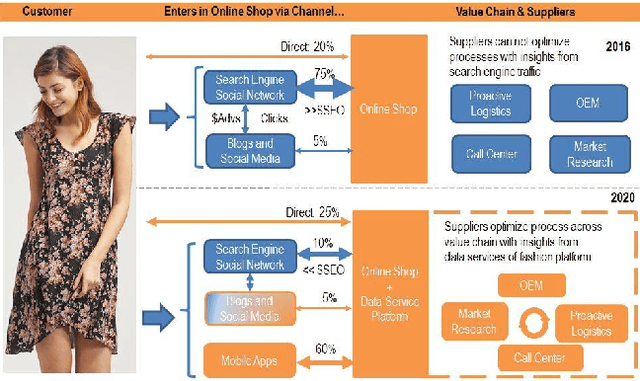
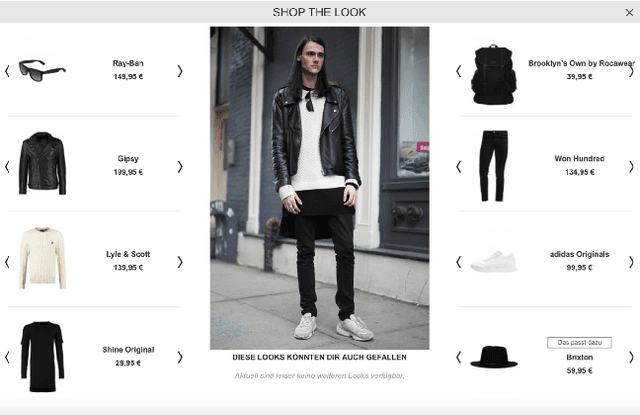
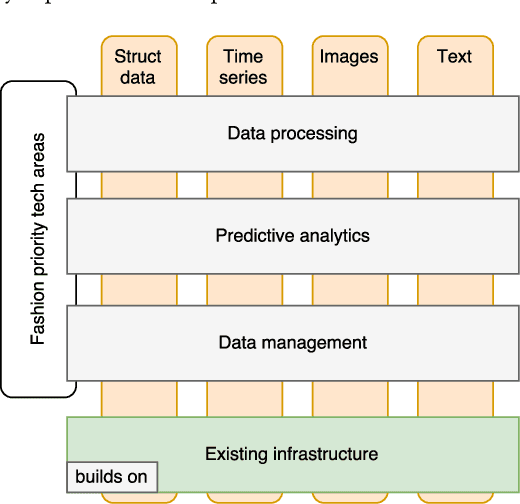
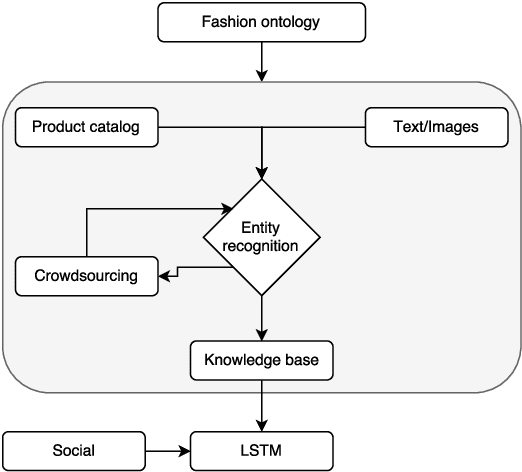
Abstract:A core business in the fashion industry is the understanding and prediction of customer needs and trends. Search engines and social networks are at the same time a fundamental bridge and a costly middleman between the customer's purchase intention and the retailer. To better exploit Europe's distinctive characteristics e.g., multiple languages, fashion and cultural differences, it is pivotal to reduce retailers' dependence to search engines. This goal can be achieved by harnessing various data channels (manufacturers and distribution networks, online shops, large retailers, social media, market observers, call centers, press/magazines etc.) that retailers can leverage in order to gain more insight about potential buyers, and on the industry trends as a whole. This can enable the creation of novel on-line shopping experiences, the detection of influencers, and the prediction of upcoming fashion trends. In this paper, we provide an overview of the main research challenges and an analysis of the most promising technological solutions that we are investigating in the FashionBrain project.
 Add to Chrome
Add to Chrome Add to Firefox
Add to Firefox Add to Edge
Add to Edge